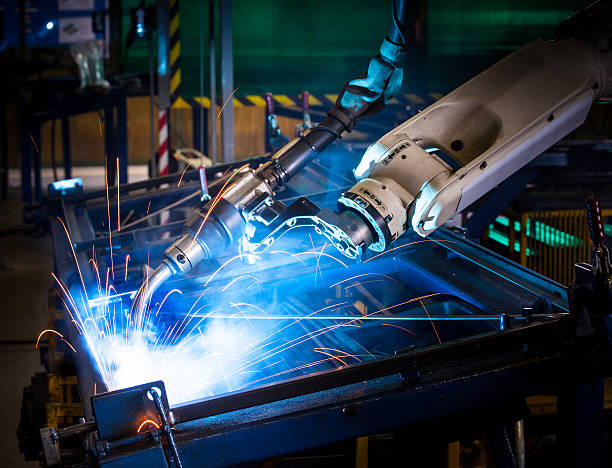Welding robotics has revolutionised the manufacturing industry by providing precision, efficiency, and consistency in welding processes. To achieve high-quality welds, it’s crucial to create an environment free from contaminants that can compromise weld integrity. Gas purging is a critical aspect of welding robotics, ensuring a clean welding environment that promotes strong and durable welds. This article explores the significance of gas purging in robotic welding and its role in achieving impeccable weld quality.
Preventing Oxidation: Preserving Weld Integrity
Oxidation is a significant concern in welding, as it can weaken the weld and compromise its integrity. When metals are exposed to oxygen, especially at elevated temperatures, they can form oxides that reduce the strength of the weld. Gas purging displaces oxygen, preventing its interaction with the metal. Thus, it helps maintain the purity of the weld.
Minimising Nitrogen Contamination: Achieving Stronger Welds
Nitrogen contamination can also affect weld quality. Excessive nitrogen in the weld zone can lead to brittleness and reduced weld strength. Gas purging, by reducing nitrogen levels in the atmosphere surrounding the weld, minimises the risk of nitrogen contamination and contributes to the formation of stronger and more durable welds.
Controlling Heat-Affected Zone (HAZ): Precision and Consistency
The heat-affected zone (HAZ) is an area surrounding the weld where the metal’s microstructure and properties may be altered due to the welding process. Proper gas purging helps control the temperature in the HAZ, ensuring that it remains within acceptable limits. This control is essential for achieving consistent weld quality, especially in applications where precise metallurgical properties are required.
Preventing Porosity: Void-Free Welds
Porosity, the presence of small voids or gas pockets in the weld, is a common defect that can weaken welds. Gas purging plays a vital role in preventing porosity by maintaining a clean environment around the weld puddle. The controlled atmosphere displaces potential contaminants that could lead to the formation of porosity, resulting in void-free and stronger welds.
Suitability for Reactive Metals: Welding Exotic Materials
Gas purging is particularly valuable when welding reactive or exotic metals such as titanium and zirconium. These metals are highly susceptible to contamination by atmospheric gases and require a controlled welding environment. Gas purging enables the successful welding of these materials, expanding the application range of welding robotics technology.
Optimising Weld Penetration: Improved Fusion
Gas purging not only ensures the cleanliness of the weld but also contributes to improved fusion between the base metals. Proper penetration and fusion are essential for weld strength and integrity. Gas purging assists in achieving optimal weld penetration, resulting in robust welds that meet stringent quality standards.
Customisation for Specific Applications: Tailoring Gas Mixtures
Gas purging can be customised for specific welding applications. Depending on the materials being welded and the desired results, different inert gases and gas mixtures can be used. Argon and helium are commonly employed gases, and their proportions can be adjusted to meet the requirements of the welding process.
Cost-Effective Quality Assurance: Reducing Rework
While gas purging adds an extra step to the welding process, it is a cost-effective quality assurance measure. By preventing weld defects and ensuring consistent weld quality, gas purging reduces the likelihood of costly rework and repairs. The initial investment in gas purging equipment and procedures ultimately pays off in the form of higher-quality welds and increased efficiency.
Conclusion
Gas purging is an indispensable element of robotic welding, ensuring the creation of a clean welding environment that promotes weld integrity and strength. By preventing oxidation, minimising nitrogen contamination, controlling the HAZ, and preventing defects like porosity, gas purging plays a pivotal role in achieving impeccable weld quality. In an era where precision and consistency are paramount in manufacturing, gas purging remains a critical tool in the arsenal of welding robotics techniques, delivering superior welds and driving the advancement of various industries.


